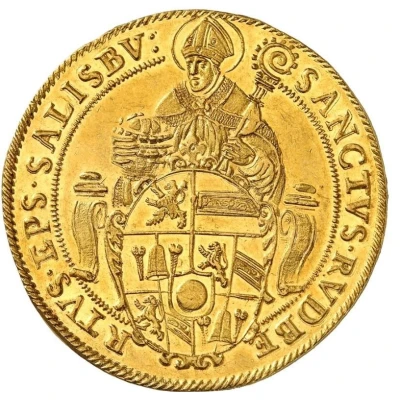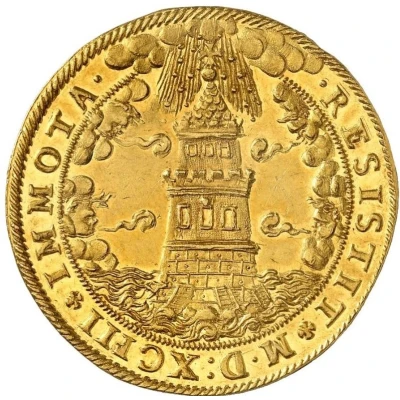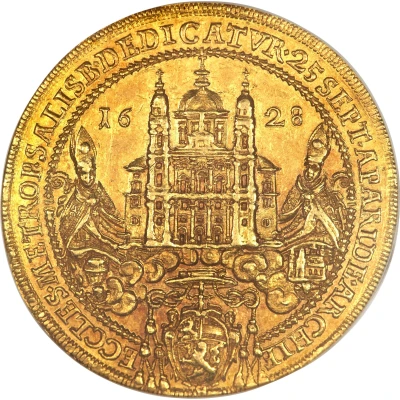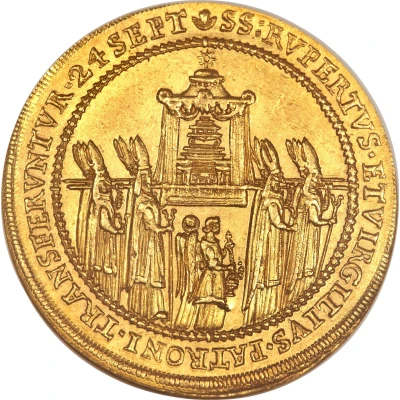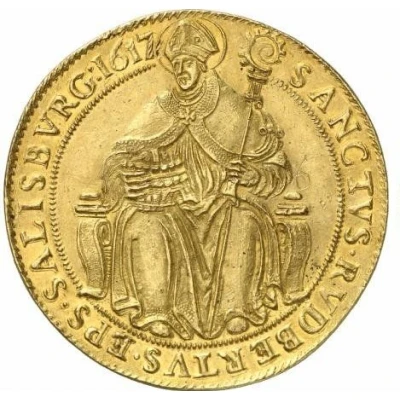
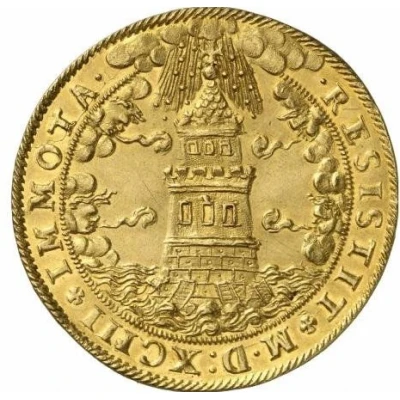

© Fritz Rudolf Künker GmbH & Co. KG, Osnabrück and Lübke & Wiedemann KG, Leonberg
6 Ducats - Markus Sittikus von Hohenems Mule
1617 year| Gold (.986) | 21 g | - |
| Issuer | Bishopric of Salzburg (Austrian States) |
|---|---|
| Prince-archbishop | Markus Sittikus von Hohenems (1612-1619) |
| Type | Standard circulation coin |
| Year | 1617 |
| Value | 6 Ducats (6 Dukaten) (13.5) |
| Currency | Thaler |
| Composition | Gold (.986) |
| Weight | 21 g |
| Shape | Round |
| Orientation | Medal alignment ↑↑ |
| Demonetized | Yes |
| Updated | 2024-10-04 |
| Numista | N#265068 |
|---|---|
| Rarity index | 95% |
Reverse
Tower in storm-tossed sea, winds from clouds to either side blowing on it, R.N. date in legend
Script: Latin
Lettering: RESISTIT + MDXCIII + IMMOTA
Comment
This highly interesting mule coinage was probably created on the occasion of the death of the previous archbishop, Wolf Dietrich von Raitenau, on January 16, 1617. Indeed, the reverse is struck from the dies to the most magnificent coin of the deceased, the Turmtaler coinage on his merits in the Turkish wars. Wolf Dietrich, whose political opponent was Duke Maximilian I of Bavaria (1598-1651), had been carried away to the rash occupation of Berchtesgaden in October 1611, for which reason he had to flee from Salzburg and was captured soon after. He spent the last five years of his life as a prisoner at Hohensalzburg. His successor Markus Sittikus of Hohenems developed a pathological fear of the return of his imprisoned cousin, whom he survived by only two years.Interesting fact
One interesting fact about the 6 Ducats - Markus Sittikus von Hohenems (Mule) 1617 coin is that it features a unique combination of two different coat of arms on its reverse side. The first coat of arms belongs to the Bishopric of Salzburg, while the second coat of arms is that of the Hohenems family, who were prominent nobles in the region. This combination of coat of arms is known as a "mule" and is highly sought after by collectors due to its rarity.
